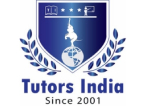Leveraging Diversity: Transforming Differences into Competitive Advantage through Effective Management
Tagged: Assignment Writing
Introduction
The concept of employment relations usually referred to as ER, or the management of employees in an organisation, has seen a substantial change in the twenty-first century. ER forms a crucial component of Human Resource Management (HRM) (Harney B. et al., 2018). Companies have created a diverse workforce by employing women and minorities. Various provisions have been made for these groups to feel more included and valued, like training that pays attention to sexual harassment, respecting values and managing diversity. Diversity and inclusion is a vast area of research in corporate organisations and includes subjects like management, sociology, and psychology. It has been noted that diversity is not a challenge by itself but instead, integrating and using a diverse workforce to attain organisational goals (Sabharwal, 2014). The assignment discusses the case for workplace diversity and managing it to understand whether and how organisational initiatives to profit from a varied workforce add a competitive advantage to a company.
Diversity Management at Workplace
While discussing Human Resource management strategy at the workplace, one may wonder, ‘What is diversity management?’. Diversity management in workplace refers to the intentional efforts taken by organisations to create an inclusive environment that values and leverages the differences among employees. It involves recognising and appreciating the unique characteristics, perspectives, and experiences that individuals bring to the table, regardless of their race, gender, age, ethnicity, sexual orientation, or other dimensions of diversity (Sabharwal, 2014). Earlier, corporate organisations used the ‘one size fits all’ approach to manage their employees. This approach had some benefits, like smoother workflow, ease of communication, improved efficiency, and reduced conflicts. Many organisations believed that financial incentives were sufficient to motivate employees. However, such an approach would not be sufficient in the 21st century, where globalisation is at its prime, and even the consumer base is diverse. Hence, there is a need to include employees from diverse backgrounds and manage the diversity to utilise the full potential of their workforce (Guillaume, 2017).
Possible Issues Arising in Diversity Management
While diversity management is gaining considerable attention, there are some prospective issues the Human Resource Department must anticipate and take necessary measures to address.
Resistance to change and implicit biases can hinder effective diversity management. Some individuals may be resistant to embracing diversity due to personal biases or fear of change. Addressing these biases and fostering a culture of inclusion requires ongoing education, training, and awareness programs.
Having a diverse workforce does not automatically guarantee inclusion. Individuals from underrepresented groups may feel marginalised or excluded due to unconscious biases, microaggressions, or a lack of support systems. Even with the best intentions, individuals may hold unconscious biases and stereotypes that can affect decision-making and interpersonal dynamics. Stereotyping can hinder career advancement opportunities for underrepresented groups and perpetuate inequities. Organisations need to address biases through diversity training, promoting awareness, and creating unbiased evaluation and promotion processes.
Language and communication barriers can arise in diverse teams, leading to misunderstandings and misinterpretations. Different cultural norms and communication styles may affect effective collaboration. Organisations must create an environment that promotes open communication, encourages active listening, and offers language support when necessary (Őnday, 2016).
Diverse workplaces can experience increased potential for conflicts arising from cultural, generational, or other differences. These conflicts may stem from misunderstandings, differing communication styles, or conflicting perspectives. A culture of open dialogue must be fostered, including conflict resolution skills and mediation, to address and mitigate such tensions constructively.
Tokenism occurs when individuals from underrepresented groups are included solely to create an appearance of diversity without their voices and contributions being genuinely valued. Organisations must ensure that diversity efforts go beyond mere representation and actively involve diverse individuals in decision-making and meaningful roles (Farndale, 2015).
Leveraging Diversity for Competitive Advantage
Although there are some issues associated with diversity, corporate organisations must not shirk from a diverse workforce. Organisations can unlock various benefits that contribute to their overall success by learning how to manage diversity and inclusion in the workplace.
One of the primary advantages of encouraging diversity in the workplace is the promotion of creativity and innovation. A diverse workforce brings together individuals with varied backgrounds, experiences, and perspectives. This rich tapestry of diversity fosters a culture of creativity and idea generation. Different viewpoints and approaches challenge conventional thinking, stimulate fresh ideas, and drive innovation within the organisation. By encouraging diverse teams to collaborate and share their unique insights, organisations can unleash a wealth of creativity, leading to the development of ground-breaking solutions and products (Saxena, 2014).
Moreover, diversity management enhances decision-making processes. Homogeneous teams often suffer from groupthink, where members conform to a dominant perspective and overlook alternative viewpoints. In contrast, diverse teams encourage critical thinking, as individuals approach problems from various angles and consider a broader range of possibilities. This diversity of perspectives helps to mitigate biases, broaden the pool of available information, and ultimately leads to more well-informed and comprehensive decision-making.
In addition to fostering creativity and improving decision-making, nurturing diversity in the workplace contributes to stronger customer relations. In today’s global marketplace, customers come from diverse backgrounds and have different needs and preferences. By building a diverse workforce that reflects the customer base, organisations gain valuable insights into these diverse markets. Employees from various backgrounds can provide unique perspectives and cultural understanding, enabling organisations to effectively develop their services, products, and marketing strategies to meet the needs of diverse customers. This customer-centric approach enhances customer satisfaction, loyalty, and market share (Cooke, 2019).
Furthermore, diversity management contributes to talent attraction and retention. Inclusive workplaces that value diversity create a sense of belonging where individuals from all backgrounds feel respected and empowered. This inclusive culture attracts top talent seeking an environment where they can thrive and contribute their unique skills. By nurturing diversity, organisations can tap into a broader talent pool, increase employee engagement and loyalty, and reduce turnover rates. A diverse workforce also enhances an organisation’s employer brand, positioning it as an attractive destination for diverse professionals seeking career opportunities (Schilke, 2014).
Conclusion
Diversity management is increasingly gaining importance in the 21st century with increasing diversity in the workplace. Differentiated Human Resource Management (HRM) is quintessential to cater to the diverse employees’ interests. Although some challenges are associated with a diverse workforce, they must not be an excuse for not incorporating and managing diversity. By proactively addressing diversity and inclusion within the workplace, companies can reap various benefits that drive innovation, improve decision-making, broaden market reach, and attract and retain exceptional talent. Embracing diversity is no longer just a moral imperative; it has emerged as a strategic imperative for businesses aiming to thrive in today’s dynamic and interconnected business environment.
References
- Harney, B., Dundon, T., & Wilkinson, A. (2018). Employment relations and human resource management.
- Sabharwal, M. (2014). Is Diversity Management Sufficient? Organisational Inclusion to Further Performance. Public Personnel Management, 43(2), 197–217. https://doi.org/10.1177/0091026014522202
- Guillaume, Y. R., Dawson, J. F., Otaye‐Ebede, L., Woods, S. A., & West, M. A. (2017). Harnessing demographic differences in organizations: What moderates the effects of workplace diversity? Journal of Organizational Behavior, 38(2), 276-303.
- Őnday, Ő. (2016). Global workforce diversity management and the challenge of managing diversity: Situation on world and in Turkey. Global Journal of Human Resource Management, 4(1), 31-51.
- Elaine Farndale, Michal Biron, Dennis R. Briscoe & Sumita Raghuram (2015) A global perspective on diversity and inclusion in work organisations, The International Journal of Human Resource Management, 26:6, 677-687, DOI: 10.1080/09585192.2014.991511
- Saxena, A. (2014). Workforce diversity: A key to improve productivity. Procedia economics and finance, 11, 76-85.
- Cooke, D. T., Olive, J., Godoy, L., Preventza, O., Mathisen, D. J., & Prager, R. L. (2019). The importance of a diverse specialty: introducing the STS workforce on diversity and inclusion. The Annals of Thoracic Surgery, 108(4), 1000-1005.
- Schilke, O. (2014). On the contingent value of dynamic capabilities for competitive advantage: The nonlinear moderating effect of environmental dynamism. Strategic management journal, 35(2), 179-203.

